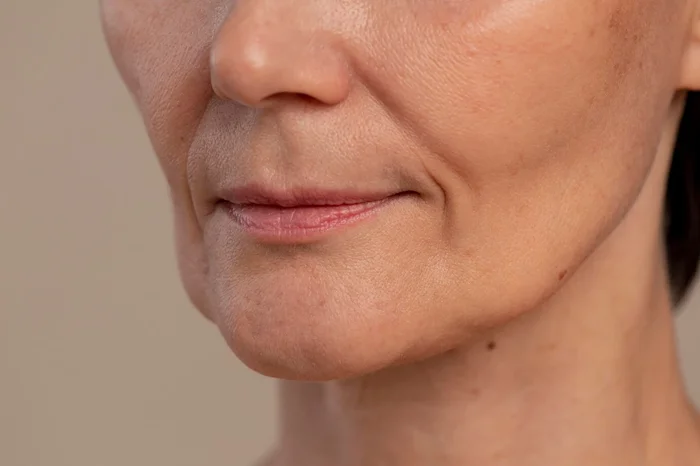Nasolabial folds, commonly referred to as “smile lines” or “laugh lines,” are the creases that extend from the sides of the nose down to the corners of the mouth. While these folds are a natural part of facial anatomy, they can become more pronounced with age, leading many individuals to seek ways to reduce their appearance. Understanding the causes of nasolabial folds is essential for exploring natural remedies and lifestyle changes that can help mitigate their prominence. This article will delve into the anatomy of nasolabial folds, their causes, and various natural methods to address them effectively.
Understanding Nasolabial Folds
What Are Nasolabial Folds?
Nasolabial folds are facial lines that form due to a combination of factors, including aging, genetics, and environmental influences. They are primarily caused by a loss of collagen and elastin in the skin, which leads to decreased elasticity and firmness. The structure of the underlying facial bones and fat also plays a significant role in the depth and visibility of these folds.
Anatomy of Nasolabial Folds
The nasolabial fold is anatomically defined by its location between the nose and the mouth. It consists of skin, subcutaneous tissue, and muscle fibers that contribute to facial expressions. As we age, the fat pads in our cheeks may diminish, leading to sagging skin and more pronounced nasolabial folds.
Types of Nasolabial Folds
There are three primary types of nasolabial folds based on their underlying causes:
Volume Deficiency Type: This type occurs due to a lack of volume in the surrounding areas, often exacerbated by aging.
Skin Attachment and Sagging Type: This type is characterized by loose skin above the fold that sags, creating a deeper line.
Muscular Type: This type arises from repeated facial movements, such as smiling or frowning, which can deepen existing lines.
Causes of Nasolabial Folds
Aging Process
As people age, their bodies produce less collagen and elastin—proteins essential for maintaining skin elasticity. The gradual depletion of these proteins results in sagging skin and more visible nasolabial folds. Additionally, changes in bone structure can affect how skin sits on the face.
Lifestyle Factors
Certain lifestyle choices can accelerate the formation of nasolabial folds:
Smoking: Contributes to collagen breakdown and reduces skin elasticity.
Sun Exposure: UV rays damage skin cells and promote premature aging.
Weight Fluctuations: Gaining and losing weight can stretch facial skin over time.
Facial Expressions: Frequent smiling or frowning can deepen these lines due to muscle contractions.
Natural Remedies for Nasolabial Folds
While cosmetic procedures like fillers or surgeries are popular options for reducing nasolabial folds, many individuals prefer natural methods. Here are several effective strategies:
1. Facial Exercises
Facial exercises aim to strengthen the muscles around the nasolabial area, potentially reducing fold prominence over time. Here are some exercises you can try:
Kissing Exercise: Pucker your lips as if you are kissing the ceiling. Hold for 15 seconds and repeat 4-5 times.
Pouting Exercise: Pout your lips and then pull the corners outward. Hold for 15 seconds and repeat 4-5 times.
Corner Pulling Exercise: With your mouth slightly open, use your index fingers to pull on the corners of your mouth outward. Hold for 2-3 seconds and repeat 25-50 times.
2. Hydration
Staying hydrated is crucial for maintaining skin elasticity. Drinking plenty of water helps keep your skin plump and may reduce the appearance of fine lines and wrinkles.
3. Nutrition
A balanced diet rich in vitamins and minerals supports skin health. Focus on foods high in antioxidants (like berries), omega-3 fatty acids (found in fish), and vitamins C and E (found in citrus fruits and nuts). These nutrients help combat oxidative stress that contributes to aging.
4. Skin Care Routine
Implementing a consistent skincare routine can help improve skin texture:
Moisturizers: Use products containing hyaluronic acid or glycerin to retain moisture.
Sunscreen: Protect your skin from UV damage by applying broad-spectrum sunscreen daily.
Retinoids: Incorporate retinoid creams into your routine; they promote cell turnover and collagen production.
5. Natural Oils
Certain oils have properties that may help improve skin elasticity:
Coconut Oil: Known for its moisturizing properties; it can be massaged into the skin around the nasolabial folds.
Rosehip Oil: Rich in essential fatty acids and antioxidants; it may promote skin regeneration.
6. Facial Massage
Regular facial massages can stimulate blood circulation and promote lymphatic drainage, which may help reduce puffiness around the nasolabial area. Use gentle upward strokes with your fingers or consider using a jade roller for added benefits.
7. Adequate Sleep
Quality sleep is vital for overall health, including skin health. Aim for 7-9 hours per night to allow your body time to repair itself.
8. Avoiding Harmful Habits
Limiting habits such as smoking or excessive alcohol consumption can significantly benefit your skin’s appearance over time.
Conclusion
Nasolabial folds are a natural part of aging but can be managed through various natural methods. By incorporating facial exercises, maintaining hydration, adopting a balanced diet, establishing a consistent skincare routine, using natural oils, performing facial massages, ensuring adequate sleep, and avoiding harmful habits, individuals can effectively reduce the prominence of these folds without resorting to invasive procedures.
While these methods may not eliminate nasolabial folds entirely, they can contribute to healthier-looking skin and improved confidence over time. Always consult with a healthcare professional or dermatologist before starting any new skincare or exercise regimen to ensure it aligns with your individual needs.
By embracing these natural approaches, you can take proactive steps toward maintaining youthful-looking skin while enjoying the benefits of holistic self-care practices.
Related topic:
How to Reduce Nasolabial Folds with Makeup?
What causes deep nasolabial folds?
What is the best treatment for nasolabial folds?

